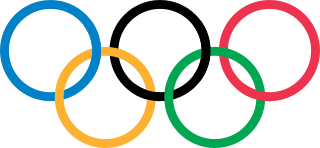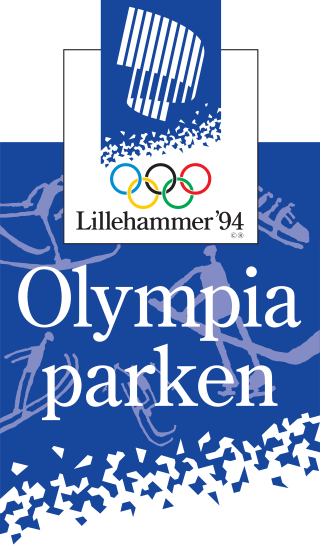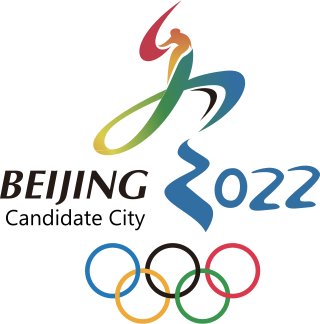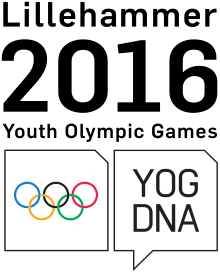
The Winter Olympic Games is a major international multi-sport event held once every four years for sports practiced on snow and ice. The first Winter Olympic Games, the 1924 Winter Olympics, were held in Chamonix, France. The modern Olympic Games were inspired by the ancient Olympic Games, which were held in Olympia, Greece, from 776 BC to 394 AD. The Baron Pierre de Coubertin of France founded the International Olympic Committee (IOC) 1,500 years later in 1894, leading to the first modern Summer Olympic Games in Athens, Greece in 1896. The IOC is the governing body of the Olympic Movement, with the Olympic Charter defining its structure and authority. The original five Winter Olympic Sports were bobsleigh, curling, ice hockey, Nordic skiing, and skating. The Games were held every four years from 1924 to 1936, interrupted in 1940 and 1944 by World War II, and resumed in 1948. Until 1992, the Summer Olympic Games and the Winter Olympic Games were held in the same year. A decision to change this was made in 1986, when during the 91st International Olympic Committee session, IOC members decided to alternate the Summer Olympic Games and the Winter Olympic Games on separate four-year cycles in even-numbered years. Also, at that same congress it was decided that 1992 Winter Olympics would be the last to be held in the same year as the Summer Games and that to change the rotation, the edition that would be held in 1996 would be brought forward by two years, being scheduled to 1994. After this edition, the next one was to be held in 1998 when the 4-year Olympic Cycle resumed.

The 1994 Winter Olympics, officially known as the XVII Olympic Winter Games and commonly known as Lillehammer '94, was an international winter multi-sport event held from 12 to 27 February 1994 in and around Lillehammer, Norway. Having lost the bid for the 1992 Winter Olympics to Albertville in France, Lillehammer was awarded the 1994 Winter Games on 15 September 1988, two days before the 1988 Summer Olympics opening ceremonies at the 94th IOC Session in Seoul, South Korea. Due to the calendar changes made in 1985, this was the only time that the Winter Olympics took place two years after the previous Winter Games, and the first to be held in a different year from the Summer Olympics. This was the second Olympic Games of any type hosted in Norway — the first being the 1952 Winter Olympics in Oslo — and the fourth Olympics overall to be held in a Nordic country, after the 1912 Summer Olympics in Stockholm, Sweden, and the 1952 Summer Olympics in Helsinki, Finland. As of 2022, Lillehammer is the northernmost city ever to host the Olympic Games and also the smallest. This was the last of three consecutive Olympics held in Europe, with Albertville and Barcelona in Spain hosting the 1992 Winter and Summer Games, respectively.

The 1992 Winter Olympics, officially known as the XVI Olympic Winter Games and commonly known as Albertville '92, was a winter multi-sport event held from 8 to 23 February 1992 in and around Albertville, France. Albertville won the bid to host the Winter Olympics in 1986, beating Sofia, Falun, Lillehammer, Cortina d'Ampezzo, Anchorage, and Berchtesgaden. The 1992 Winter Olympics were the last winter games held in the same year as the Summer Olympics. The Games were the fifth Olympic Games held in France and the country's third Winter Olympics, after the 1924 Winter Games in Chamonix and the 1968 Winter Games in Grenoble. This games was the first of two consecutive Olympic games to be held in Western Europe, preceding the 1992 Summer Olympics in Barcelona, Spain.

Vikingskipet, officially known as Hamar Olympic Hall, is an indoor multi-use sport and event venue in Hamar, Norway. It was built as the speed skating rink for the 1994 Winter Olympics, and has since also hosted events and tournaments in ice speedway, motorcycle speedway, rally, association football, bandy, ice sledge speed racing, flying disc and track cycling. The arena is also used for concerts, trade fair and the annual computer party The Gathering. It is the home arena of Hamar IL bandy team. The venue is owned by Hamar Municipality, and along with Hamar Olympic Amphitheatre is run by the municipal Hamar Olympiske Anlegg. Vikingskipet has a capacity for 10,600 spectators during sporting events and 20,000 during concerts.

Lysgårdsbakken, officially known as Lysgårdsbakkene Ski Jumping Arena, is a ski jumping hill in Lillehammer, Norway. It consists of a large hill, with a K-point of 123 and a hill size of 138, and a small hill with a K-point of 90 and a hill size of 98. It opened in 1993 for the 1994 Winter Olympics, where it hosted the ski jumping and Nordic combined events, as well as the opening and closing ceremonies. After the Olympics, ownership was transferred to the municipal Lillehammer Olympiapark and it has since been used for several FIS Ski Jumping World Cup and FIS Nordic Combined World Cup tournaments, including hosting the Nordic Tournament. It has a capacity for 35,000 spectators and is one of three national ski jumping hills in Norway. In 2007, the large hill was rebuilt to a larger profile, and received a new plastic lining. The venue sees 80,000 annual jumps in the winter and 20,000 in the summer season.

Gjøvik Olympic Cavern Hall is an ice hockey rink located within a mountain hall in Gjøvik, Norway. With a capacity for 5,500 spectators, the hall also features a 25-meter swimming pool and telecommunications installations. Opened in 1993 and costing 134.6 million Norwegian krone (NOK), it was built for the 1994 Winter Olympics, where it hosted 16 ice hockey matches. It is the home of Gjøvik Hockey, has hosted the 1995 World Short Track Speed Skating Championships and is also used as an event venue. The structure is the world's largest cavern hall for public use.

CC Amfi, also known as Nordlyshallen, is an indoor sports arena in Hamar, Norway. It is mostly used for ice hockey and is the home arena of Storhamar Hockey. It has also been used for short track speed skating, figure skating, handball, events and concerts. The venue has a capacity for 7,000 spectators and was built for the 1994 Winter Olympics, where it was used for short track speed skating and figure skating. Other major events held at the arena include the 1999 IIHF World Championship in ice hockey, the 1999 World Women's Handball Championship, the 2012 IPC Ice Sledge Hockey World Championships and the 2016 Winter Youth Olympics.

The 2012 Winter Youth Olympics (YOG) were an international youth multi-sport event featuring winter events that was planned to complement the Olympic Games. It featured athletes between the ages of 14 and 18.

The 2012 Winter Youth Olympic Games, officially known as the I Winter Youth Olympic Games (YOG), were an international multi-sport event for youths that took place in Innsbruck, Austria, on 13–22 January 2012. They were the inaugural Winter Youth Olympics, a major sports and cultural festival celebrated in the tradition of the Olympic Games. Approximately 1100 athletes from 70 countries competed. The decision for Innsbruck to host the Games was announced on 12 December 2008 after mail voting by 105 International Olympic Committee (IOC) members. Innsbruck is the first city to host three winter Olympic events, having previously hosted the 1964 Winter Olympics and the 1976 Winter Olympics.

Stampesletta is a multi-use stadium complex in Lillehammer, Norway. Owned and operated by Lillehammer Municipality, it consists of a track and field venue, an artificial turf football field, three natural grass football fields, a gravel field and natural grass training pitches. In addition, it features a club house, locker facilities and a grandstand between the athletics and artificial turf fields. The venue is located about 1 kilometer (0.6 mi) from the town center, and serves as the home ground for the Second Division side Lillehammer FK, Lillehammer KFK, Roterud IL in football, and Lillehammer IF in athletics.

Lillehammer Olympic Bobsleigh and Luge Track is a bobsleigh, luge and skeleton track located at Hunderfossen in Lillehammer, Norway, 15 kilometers (9 mi) north of the town center of Lillehammer. It was completed in 1992 for the 1994 Winter Olympics, where it hosted the bobsleigh events and luge events. It has since also hosted the FIBT World Championships 1995 in skeleton and the FIL World Luge Championships 1995, and hosted 2016 Winter Youth Olympics.

Kanthaugen Freestyle Arena is a freestyle skiing stadium located in the hillside area of Kanthaugen in Lillehammer, Norway. Opened in 1992, it was built for the 1994 Winter Olympics. The venue consists of three hills—one each for aerials, moguls and ski ballet. The moguls hill has a capacity for 12,000 spectators while the other two have a 15,000-person capacity. The arena is designated as Norway's national venue for freestyle skiing. It hosted the FIS Freestyle Skiing World Cup in 1993 and 1995, and is scheduled to host freestyle skiing and snowboarding at the 2016 Winter Youth Olympics. The arena is owned by Lillehammer Olympiapark and is located adjacent to the ski jumping hill Lysgårdsbakken.

Lillehammer Olympiapark AS, trading as Olympiaparken, is a company established following the 1994 Winter Olympics to operate the Olympic venues in Lillehammer, Norway. Owned by Lillehammer Municipality, it operates five sports venues: Birkebeineren Ski Stadium, Håkons Hall, Lillehammer Olympic Bobsleigh and Luge Track, Kanthaugen Freestyle Arena and the ski jumping hill of Lysgårdsbakken. In addition to serving sports events, the company provides tourist and group activities at the venues as well as catering to larger events.

The 2020 Winter Youth Olympic Games, officially known as the III Winter Youth Olympic Games and commonly known as Lausanne 2020, were the third edition of the Winter Youth Olympics; a major international multi-sport event and cultural festival for teenagers that was held in Lausanne, Switzerland, the home of the International Olympic Committee, between 9 and 22 January 2020.

The 1994 Winter Olympics were held in and around Lillehammer, Norway, from 12 to 27 February 1994. Ten competition and fourteen non-competition venues were used, most of which were subsequently used for the 1994 Winter Paralympics. The Games were spread out over ten venues in five municipalities in two counties, Oppland and Hedmark. Lillehammer, with approximately 25,000 inhabitants, and Hamar and Gjøvik, both with approximately 27,000 inhabitants, are all situated on the lake Mjøsa. Gjøvik and Hamar are 45 and 54 kilometers south of Lillehammer, respectively. Hunderfossen is 15 kilometers (9.3 mi) north of Lillehammer, but located within the municipality. Øyer and Ringebu, each with just under 5,000 inhabitants, are 18 and 50 kilometers north of Lillehammer, respectively, in the valley Gudbrandsdalen. Lillehammer had four competition venues, Hamar had two competition venues, while Hunderfossen, Gjøvik, Øyer and Ringebu had one competition venue each.
Oslo–Lillehammer 2018 was a proposal for Oslo and Lillehammer, Norway, to bid to host the 2018 Winter Olympics. Along with the Trondheim and Tromsø bids, it was one of three options for the Norwegian Olympic and Paralympic Committee and Confederation of Sports (NIF), who ultimately chose to not bid for the games. Oslo announced the bid in September 2006, and the official proposal report was published in February 2007.

The 2016 Winter Youth Olympics in and around Lillehammer, Norway, between 12 February and 21 February 2016. Nine competition and twelve non-competition venues are to be used; all except the Youth Olympic Village in Lillehammer and a training ice rink being are existing venues. All the competition venues and some of the non-competition venues were built ahead of the 1994 Winter Olympics. The games be held in four municipalities: Lillehammer, Hamar, Gjøvik and Øyer.

Beijing 2022 was a successful bid by Beijing, China and the Chinese Olympic Committee for the 2022 Winter Olympics. The IOC selected the host city for the 2022 Winter Olympics at the 128th IOC Session in Kuala Lumpur, Malaysia on July 31, 2015, which Beijing won.

Helsinki 2006 was a joint bid for the 2006 Winter Olympics presented by the city of Helsinki and Finnish Olympic Committee. Some of the proposed venues were located in Lillehammer, Norway.

The 2024 Winter Youth Olympics, officially known as the IV Winter Youth Olympic Games and commonly known as Gangwon 2024, were a winter multi-sport event, cultural festival, and fourth edition of the Winter Youth Olympics held between 19 January and 1 February 2024 in Gangwon Province, South Korea.
























